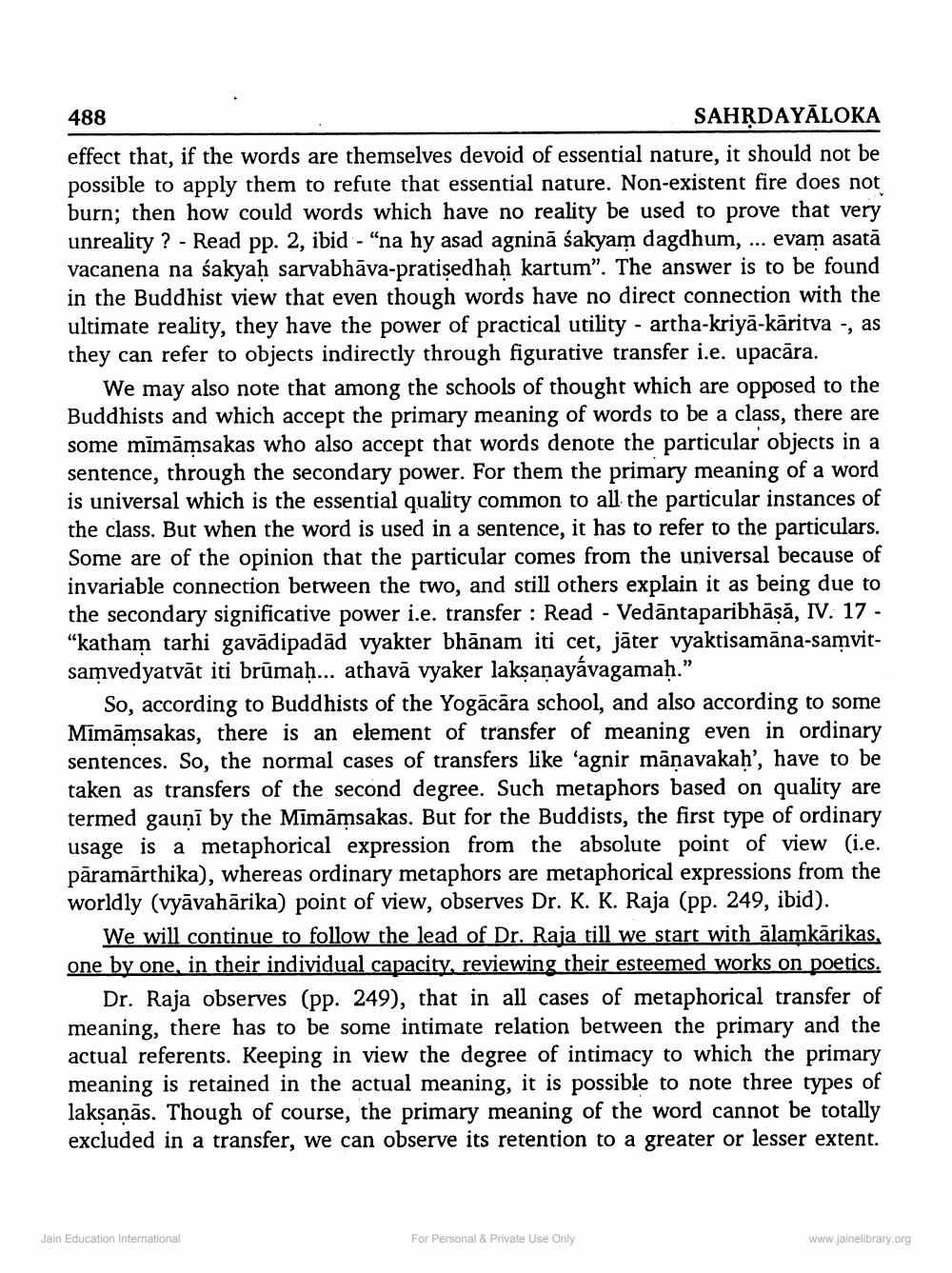________________
488
SAHRDAYĀLOKA effect that, if the words are themselves devoid of essential nature, it should not be possible to apply them to refute that essential nature. Non-existent fire does not burn; then how could words which have no reality be used to prove that very unreality ? - Read pp. 2, ibid - "na hy asad agninā śakyam dagdhum, ... evam asatā vacanena na śakyah sarvabhāva-pratiședhah kartum". The answer is to be found in the Buddhist view that even though words have no direct connection with the ultimate reality, they have the power of practical utility - artha-kriyā-kāritva -, as they can refer to objects indirectly through figurative transfer i.e. upacāra.
We may also note that among the schools of thought which are opposed to the Buddhists and which accept the primary meaning of words to be a class, there are some mīmāmsakas who also accept that words denote the particular objects in a sentence, through the secondary power. For them the primary meaning of a word is universal which is the essential quality common to all the particular instances of the class. But when the word is used in a sentence, it has to refer to the particulars. Some are of the opinion that the particular comes from the universal because of invariable connection between the two, and still others explain it as being due to the secondary significative power i.e. transfer : Read - Vedāntaparibhāsă, IV. 17 - "katham tarhi gavādipadād vyakter bhānam iti cet, jāter vyaktisamāna-samvitsamvedyatvāt iti brūma)... athavā vyaker lakṣaṇayávagamaḥ."
So, according to Buddhists of the Yogācāra school, and also according to some Mimāmsakas, there is an element of transfer of meaning even in ordinary sentences. So, the normal cases of transfers like 'agnir māņavakah', have to be taken as transfers of the second degree. Such metaphors based on quality are termed gauņī by the Mimāmsakas. But for the Buddists, the first type of ordinary usage is a metaphorical expression from the absolute point of view (i.e. pāramārthika), whereas ordinary metaphors are metaphorical expressions from the worldly (vyāvahārika) point of view, observes Dr. K. K. Raja (pp. 249, ibid).
We will continue to follow the lead of Dr. Raja till we start with alamkārikas, one by one, in their individual capacity, reviewing their esteemed works on poetics.
Dr. Raja observes (pp. 249), that in all cases of metaphorical transfer of meaning, there has to be some intimate relation between the primary and the actual referents. Keeping in view the degree of intimacy to which the primary meaning is retained in the actual meaning, it is possible to note three types of laksaņās. Though of course, the primary meaning of the word cannot be totally excluded in a transfer, we can observe its retention to a greater or lesser extent.
Jain Education International
For Personal & Private Use Only
www.jainelibrary.org




